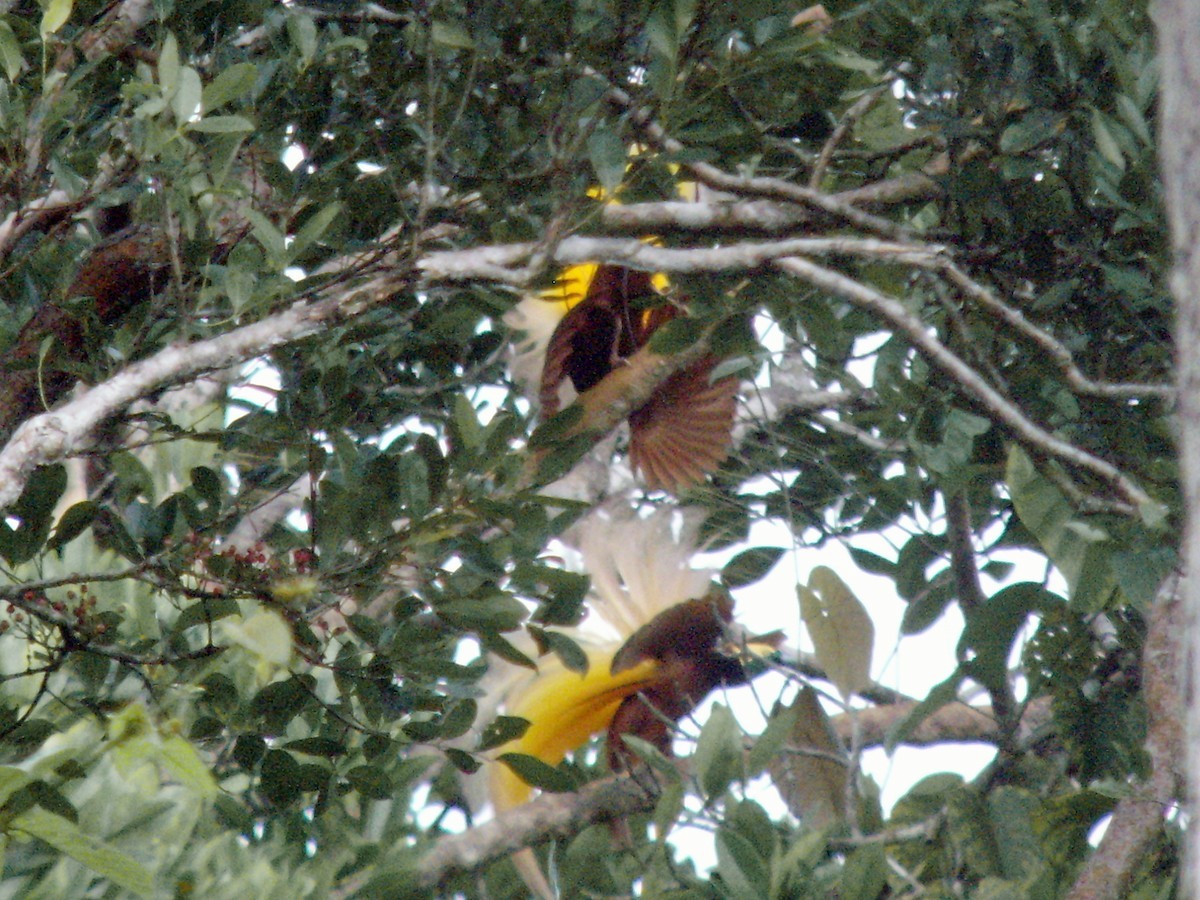Greater Bird-of-paradise
A species of Paradisaea birds-of-paradise Scientific name : Paradisaea apoda Genus : Paradisaea birds-of-paradise
Greater Bird-of-paradise, A species of Paradisaea birds-of-paradise
Botanical name: Paradisaea apoda
Genus: Paradisaea birds-of-paradise
Content
Description General Info
 Photo By Nigel Voaden
Photo By Nigel Voaden Description
The greater bird-of-paradise is the largest member in the genus Paradisaea, with males measuring up to 43 cm (17 in) (excluding the long twin tail wires). The female is bigger, at 48 cm (19 in). The plumage of this species is also sexually dimorphic. The male has an iridescent green face and a yellow glossed with silver iridescence crown, head and nape. The rest of the body plumage is maroon-brown. The flank plumes, used in displays, are yellow at the base, turning white and streaked with maroon. The female has unbarred maroon brown plumage. In both sexes the iris is yellow and the bills blue. 
Size
35 - 43 cm
Nest Placement
Tree
Feeding Habits
Greater Bird-of-paradise primarily eat fruits and arthropods. They forage with other species, starting pre-dawn, and are known for their loud wawk-wawk calls during these times.
Habitat
The greater Bird-of-paradise predominantly inhabits lowland and hill forests located in tropical regions. These areas are characterized by dense, lush vegetation with a rich biodiversity, providing both ample food sources and complex vertical structures enabling sophisticated courtship displays. The species prefers areas with warm and humid climate, flourishing in the forest canopy where such environmental conditions are prevalent.
Dite type
Frugivorous
General Info
Feeding Habits
Bird food type

Fruit
Distribution Area
The greater bird-of-paradise is distributed to lowland and hill forests of southwest New Guinea and Aru Islands, Indonesia. The diet consists mainly of fruits, seeds and small insects. A small population was introduced by Sir William Ingram in 1909-1912 to Little Tobago Island of West Indies in an attempt to save the species from extinction due to overhunting for plume trades. The introduced populations survived until at least 1966, but most likely are extinct now. The bird still appears on Trinidad and Tobago's $100 bill. 
Species Status
A common species throughout its native range, the greater bird-of-paradise is evaluated as Least Concern on the IUCN Red List of Threatened Species. It is listed on Appendix II of CITES. 

 Photo By Nigel Voaden
Photo By Nigel Voaden Scientific Classification
Phylum
Chordates Class
Birds Order
Perching birds Family
Birds-of-paradise Species
Greater Bird-of-paradise